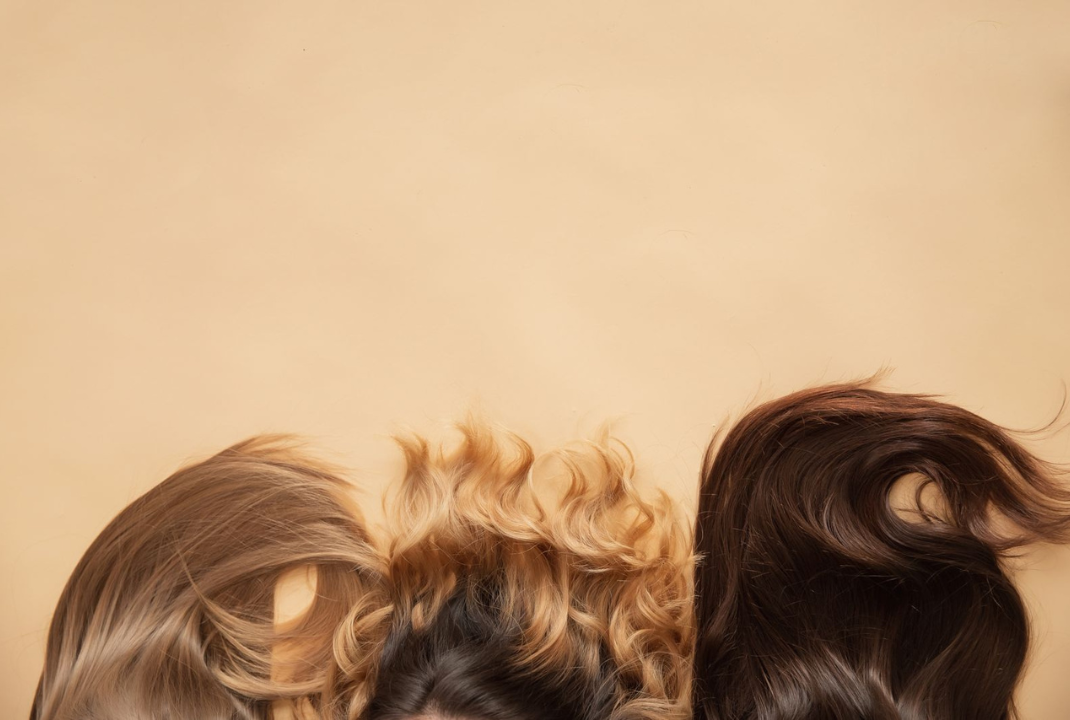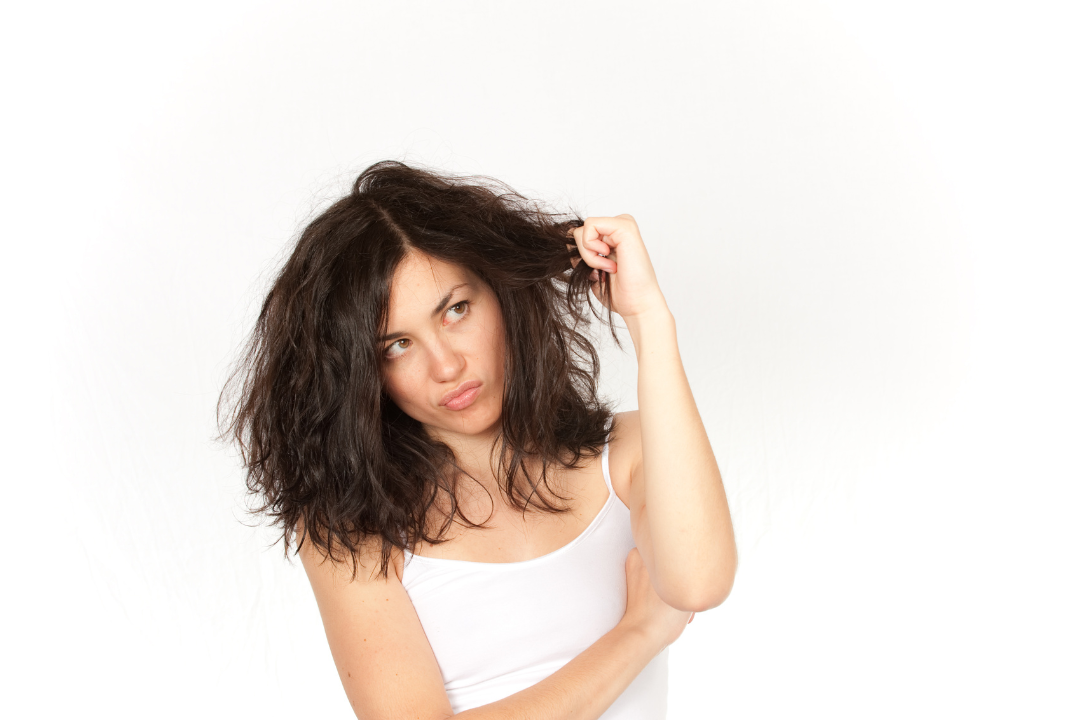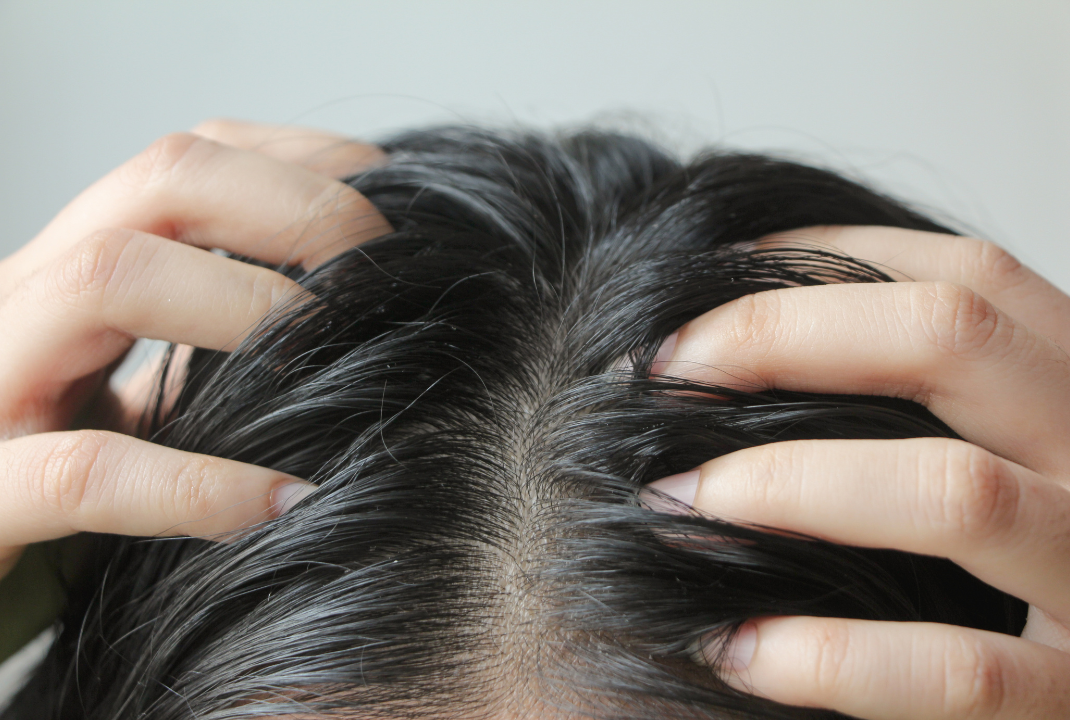Learn how to identify your hair type and give your locks the care they deserve with YA-MAN’s comprehensive guide.
If your bathroom cabinet has turned into a hair product graveyard, filled with half-empty bottles of serums and styling creams that just didn't work, you're not alone. The trick is to understand your hair type and its unique needs.
Wondering, “What type of hair do I have?” There are many types of hair textures, and figuring out where your locks land can be a challenge.
YA-MAN has you covered on all the different hair types and textures. Consider this guide your roadmap to healthier, happier hair.
Hair Type Chart Cheat Sheet
Generally, hair falls into four main categories: straight, wavy, curly, and coily. Within each category, there are subcategories (A, B, and C) that further define the tightness or looseness of your waves, curls, or coils.

This hair type chart provides a visual overview of the different hair types and their defining characteristics. But like any good cheat sheet, it's just a starting point.
If you truly want to figure out, “What’s my hair type?” you’ll want to dive deeper into each classification.
What Type of Hair Do I Have? Tailored Tips for Every Hair Type
To help you find your hair type and level up your routine, here’s a breakdown of each of the different hair types, along with its care essentials:
Type 1: Straight Hair
Features:
Straight hair is characterized by its smooth, sleek texture and little to no curl pattern. It’s also shinier and reflects light more than other hair types due to the natural hair oils that easily travel down the straight hair shaft.
But it can have oiliness and lack of volume.
Type 1 Subsets:
- 1A: Fine, very straight hair that struggles to hold a curl.
- 1B: Medium-textured straight hair with a bit more body and volume.
- 1C: Thick, coarse, straight strands resistant to styling and prone to frizz.
Type 1 Care & Styling:
To keep straight strands pretty and polished, use:

- Lightweight, smoothing products that avoid weighing hair down.
- Volumizing shampoos and conditioners.
- Tools like YA-MAN’s SPA STYLER® Blow Dry + Scalp Massage combined with our Attachment Blowout Brush will give you a voluminous blowout while minimizing heat damage.
- Dry shampoo to refresh roots between washes and combat oiliness.
Features:
Wavy hair boasts a gentle "S" shape that's neither straight nor curled. It's known for its effortless texture and movement but can also be prone to frizz and a bit of unpredictability.

Type 2 Subsets:
- 2A: Loose, tousled waves with a subtle bend.
- 2B: More defined S-shaped waves with a tendency for frizz.
- 2C: Wavy hair with spiral curls mixed in, often with a thicker texture.
Type 2 Care & Styling:
For waves that wow, make these your go-to:
- Curl creams, mousses, and sea salt sprays that enhance waves and control frizz.
- Microfiber towels or cotton t-shirts for drying to minimize frizz.
- Dry your hair with a diffuser, like YA-MAN’s SPA STYLER® Attachment Curl Lift Diffuser, to further define waves and add volume.
- Avoid over-brushing, which can disrupt the wave pattern and cause frizz.
Features:
Curly hair is a visual celebration of texture and volume, characterized by its defined spiral curls that range from loose loops to tight corkscrews.
While undeniably gorgeous, curly hair requires specific high maintenance to keep its shape, hydration, and bounce.
Type 3 Subsets:
- 3A: Loose, well-defined curls with a noticeable "S" shape.
- 3B: Springy ringlets with a circumference similar to a Sharpie marker.
- 3C: Tight corkscrew curls with a circumference close to a straw or pencil.
Type 3 Care & Styling:
To bring out the best in your curls:

- Use YA-MAN’s Nano Lift Scalp Care Essence for Salon to nourish and soothe a healthy scalp environment for curl formation.
- Finger comb or use wide-tooth combs to detangle gently and preserve curl definition.
- Wear protective styles like braids or twists to minimize tangles and breakage.
- Avoid harsh sulfates and alcohols that can strip hair of its natural oils and dry it out.
Type 4: Coily/Textured Hair
Features:
Coily hair, also known as kinky, springy, spongy, or textured hair has tight coils and a voluminous texture. It defies gravity and embraces its natural shape, ranging from tightly coiled spirals to zig-zag patterns.
Coily hair requires specific care to maintain its health, hydration, and definition.
Type 4 Subsets:
- 4A: Tightly coiled "S" shaped curls with a defined pattern.
- 4B: "Z" shaped or zig-zag or corkscrew coils
- 4C: Tightly coiled with a less defined pattern, often with a dense and voluminous texture.

Type 4 Care & Styling:
To keep your coils gorgeous and hydrated, try:
- Leave-in conditioners, hair butters, and oils to lock in moisture. The YA-MAN Deep Moist Repair Treatment is ideal for coily hair, delivering intense hydration and repair to keep those coils healthy and defined.
- Protective styles like braids, twists, and bantu knots to minimize tangling and protect hair while sleeping.
- Finger-combing and wide tooth combs that glide through dense coils without snagging.
Hair Porosity vs. Hair Density

Porosity measures how easily your hair absorbs and retains moisture, depending on whether your hair cuticle is more open or closed.
Density refers to the number of individual strands on your scalp.
If you’re just starting to answer the question, “How do I identify my hair type?” then understanding your hair’s porosity and density is a crucial step.
To test for porosity, try:
- The Float Test: Drop a few clean strands of hair into a glass of water. If they:
- Float = low porosity hair.
- Sink = high porosity hair.
- Float somewhere in the middle = medium porosity hair.
- The Spray Bottle Test: Spray a small section of your hair with water. If the water:
- Beads up on your hair = low porosity hair.
- Absorbs quickly = high porosity hair.
- Takes a while to absorb = medium porosity hair.
To check for density:
- The Scalp Visibility Test: Part your hair in the middle and check out your scalp. The more clearly you can see it, the lower the density (or amount of hair).
- The Ponytail Test: Put your hair into a ponytail and measure the circumference with a tape measure.
- Less than 2 inches = low-density hair.
- 2-4 inches = medium-density hair.
- More than 4 inches = high-density hair.
Design Your Ultimate Hair Routine With YA-MAN!
It’s time to stop guessing, “What type of hair do I have? With the insights in this article, you can confidently embrace a routine that’s perfectly tailored to you and your strands!
Shop YA-MAN's collection of award-winning tools, products, and solutions for every hair type.



